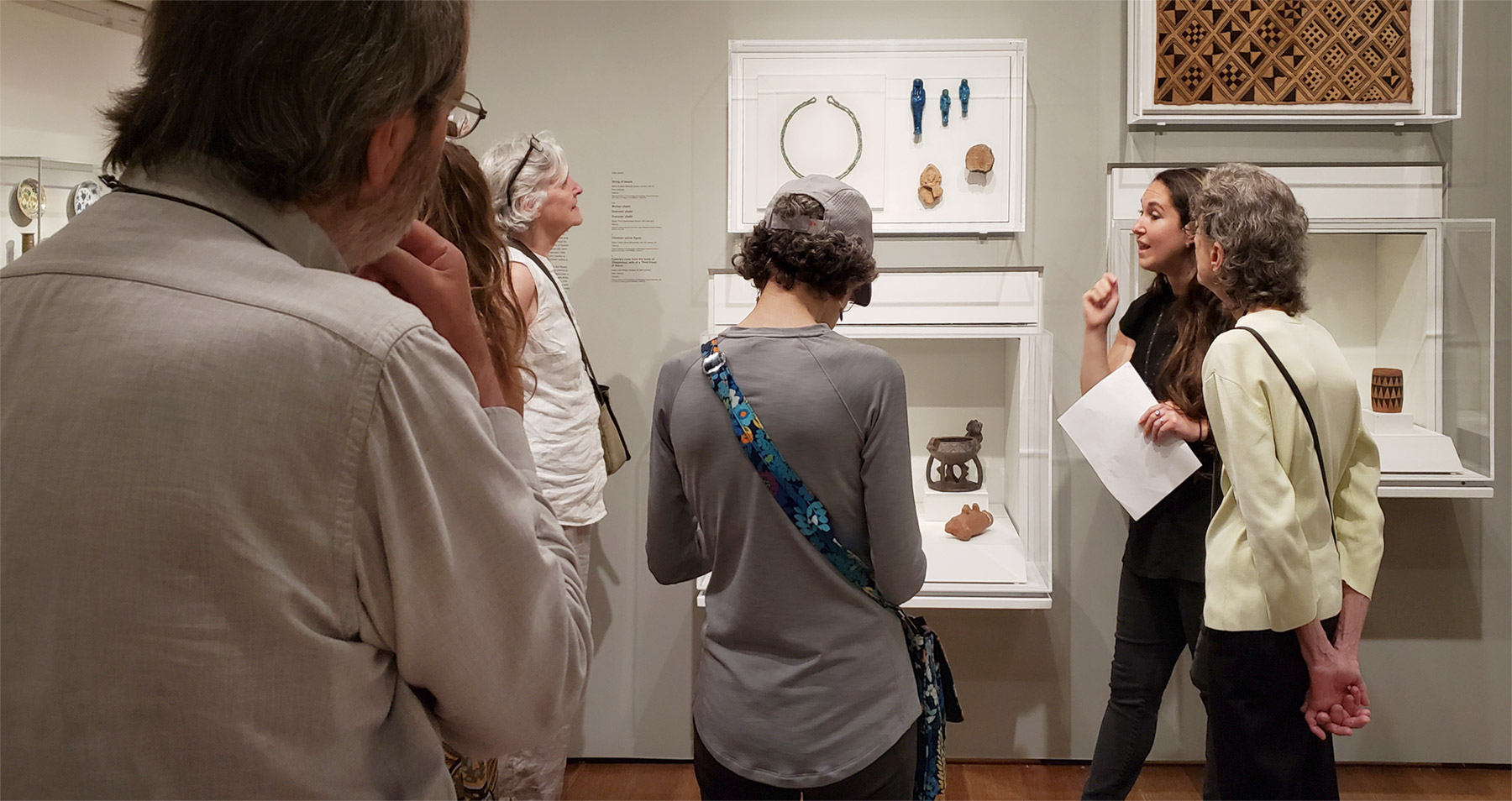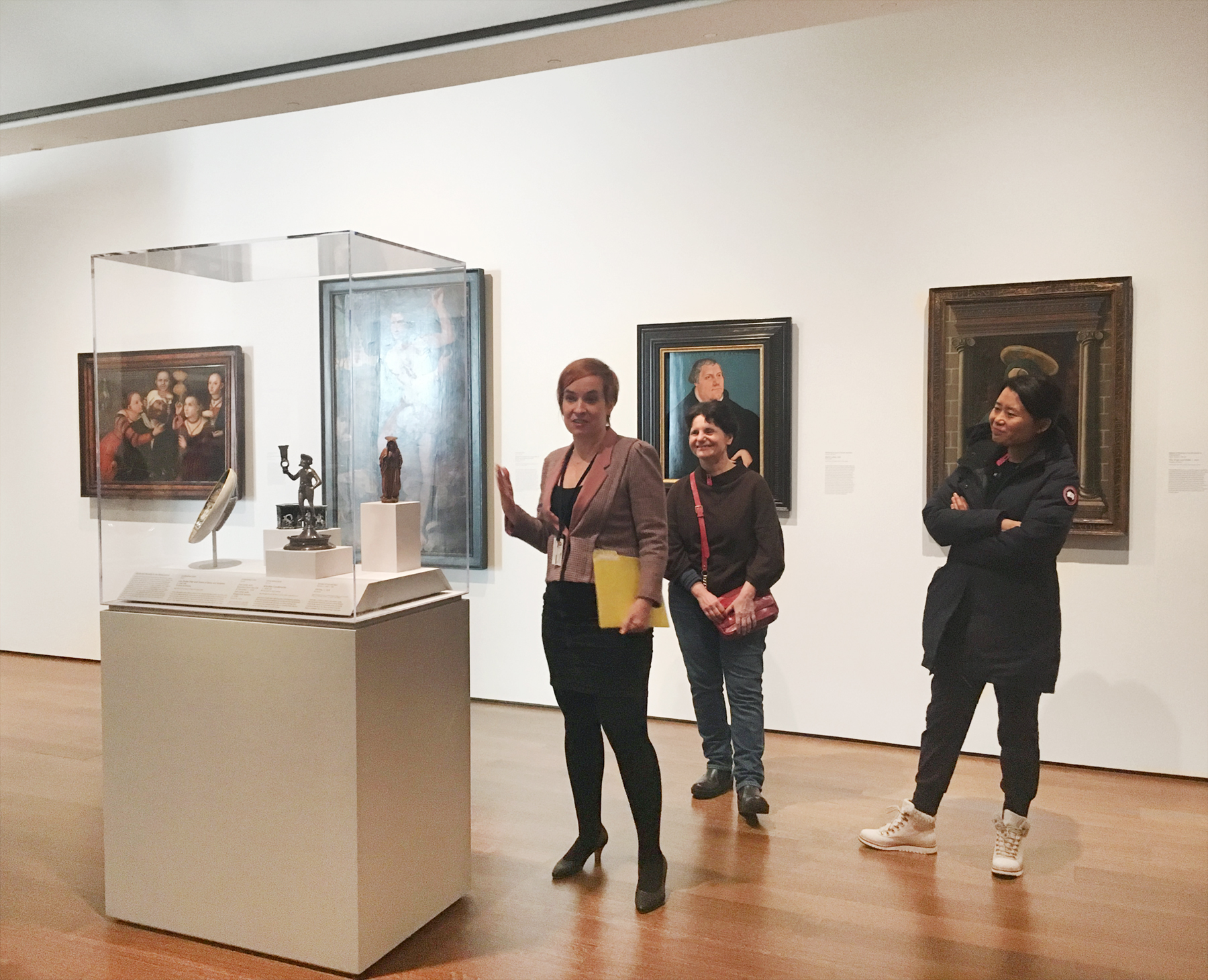Last July, a gallery talk given by three of our fellows, titled “Red, White, and Blue,” focused not on American works—as one might expect around Independence Day—but on international objects that fit the color scheme.
The discussion proved especially lively and fruitful because the fellows come from diverse research backgrounds: Jen Thum is the Inga Maren Otto Curatorial Fellow in the Division of Academic and Public Programs, Julie Wertz is the Beal Family Postgraduate Fellow in Conservation Science, and Gabriella Szalay is the Renke B. and Pamela M. Thye Curatorial Fellow in the Busch-Reisinger Museum. Their talk focused on a wide range of objects, including Ottoman textiles, abstract paintings, and Egyptian art. The presentation concluded with German-born artist Josef Albers’s Homage to the Square (1955), a work of vivid red and blue squares, and a consideration of Albers’s interest in examining color and perception. It was just one example of the collaborative and creative slate of gallery talks regularly offered by our fellows.
“It’s a way of showing people that there are different voices and different kinds of training among our fellows,” said Thum.
Whether focusing on works from new exhibitions or old favorites on permanent display, and whether given by an individual or co-led by a group of staff, gallery talks (offered a few days per week, and free with museum admissions) bring fresh perspectives on our works. Conservators, curators, fellows, graduate students, and other experts from the museums are among those who regularly share their knowledge during these lunchtime presentations. (Check our calendar to find upcoming talks.) The latest cohort of fellows has been particularly original with their approach to the talks.
Molly Ryan, who organizes and schedules the talks, described them as “deeply researched, dynamic, informal, and fun.” For presenters, Ryan said, the challenge is to tell an expanded story about works on view and to share new research through close looking and active conversation that engages all guests. Overall, she said, “they help us show our visitors that what we know—and how we think about—our collections is always changing.”
Other themed collaborative talks include three that were offered around Valentine's Day, organized by Frances Gallart Marques, the Frederick Randolph Grace Curatorial Fellow in Ancient Art: “Crazy in Love,” “Tainted Love,” and “What Is Love? Baby, Don’t Hurt Me.”
Individual talks also riff on popular culture, such as Jen Thum’s “Introduction to the Dark Arts,” which borrows a phrase from Harry Potter to introduce objects relating to Egyptian magic.
The best talks, Thum said, are the ones that spark discussion. Gallery talks “are ways of saying that this is a space where you can engage with works and ask questions about them,” she said.
When determining what works she’ll present in a talk, Thum thinks about each object as a case study pertaining to her larger theme. Within the encompassing topic, she said, “all of the works should present a different angle.” This often leads her to consider objects that she may not have noticed otherwise.
“It’s a way of showing people that there are different voices and different kinds of training among our fellows.”
For example, the exhibition Prince Shōtoku: The Secrets Within inspired Thum’s talk “What’s in That Box?” The 13th-century Japanese sculpture at the center of the exhibition at one time contained more than 70 small dedicatory objects. The exhibition encouraged Thum to think about the museums’ wide array of vessels and boxes (and their contents) in a different way and to include objects such as the Tower-shaped casket in her talk.




